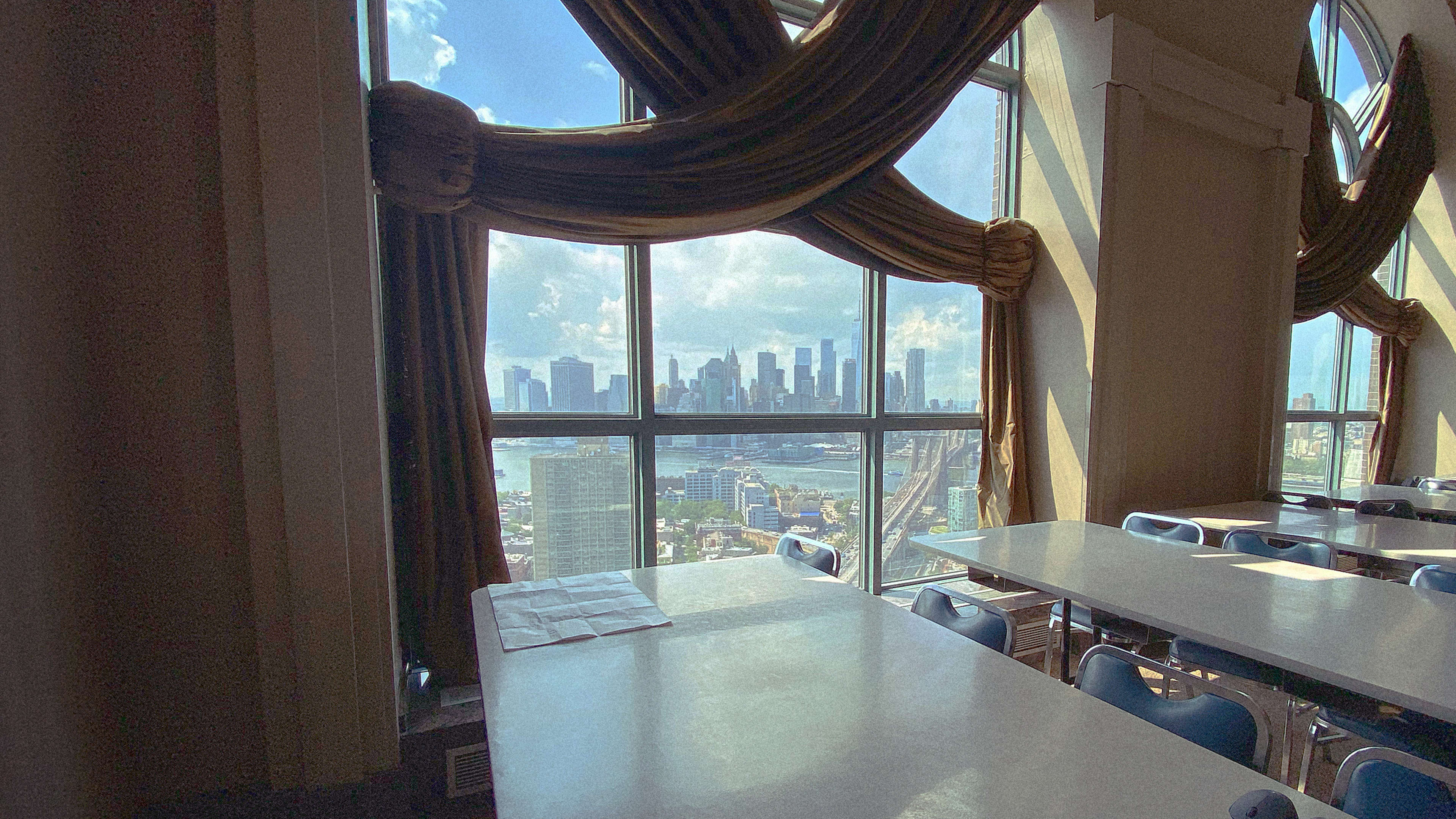It’s not a huge architectural leap from hotel room to studio apartment. With a bed, a bathroom, and a little extra space for a table or desk, the hotel room is basically an efficiency apartment without the kitchen. And some older hotels even have kitchenettes, further blurring the line between the two.
For the New York social services nonprofit Breaking Ground, which converts old hotels into supportive housing facilities for formerly homeless people, there really isn’t much difference at all. So when a 29-story hotel in Brooklyn formerly run by a Jehovah’s Witness organization came on the market in 2018, the organization jumped. With funding assistance from the city of New York, Breaking Ground bought the building for about $170 million.
“It had been slated to be an upscale hotel, and then the owners realized that wouldn’t be the best use of it. So before it went on the market, we started working with them,” says Brenda Rosen, president and CEO of Breaking Ground. “With the city’s support we were really able to move forward.”
Breaking Ground is now in the process of renovating the former hotel in Brooklyn’s Dumbo neighborhood into 491 apartments for formerly homeless and very-low-income New Yorkers. As permanent supportive housing, the project will mix affordable housing units with on-site medical and social services aimed at helping people transition out of homelessness.

Breaking Ground has been doing this kind of conversion since its founding in 1990. Its first project was a conversion of a former single-room occupancy hotel in midtown Manhattan, then a seedy part of the city. That project, the 652-unit Times Square Hotel, still operates as the largest supportive housing residence in the country.
Though the Brooklyn project has been in the works since 2018, hotel conversions may soon become a lot more common. The coronavirus pandemic has ravaged the hotel industry. According to a November survey by the American Hotel & Lodging Association, 36% of hotel operators anticipate being forced to sell by the end of the year unless they receive additional government assistance. This could lead to an influx of hotels on the market. Thanks to the relatively easy process of converting a hotel room to a studio apartment, conversions may be a fast and cheap way to create more affordable and supportive housing in cities.
“Converting hotels can be done at roughly half the price of new construction. And they can also be brought online much quicker,” Rosen says. For the supportive housing projects that Breaking Ground specializes in, a new build would typically cost about $500,000 per unit and take around two years to open. A conversion, Rosen says, could be done for about half the cost in half the time.
“With tourism in the city way down because of COVID-19 there are many hotels that are in danger of default, and we see this as a major opportunity to turn some into affordable housing, to help homeless and low-income families,” Rosen says. “Specifically, we’re looking at large legacy hotels in Manhattan that have become distressed because of the circumstances.”
Rosen says conversations are underway on a few hotels in the 300- to 600-room range, and that deals could be struck in the coming months. “I’m cautiously optimistic,” she says.
It’s one upside during the pandemic, and something Rosen says other cities with large homeless populations should consider. Though homeless shelters and supportive housing can run up against neighborhood opposition, Rosen says the Brooklyn project was developed in conjunction with the local community and gained strong support. “We definitely think that this is a replicable model,” she says. “Finding properties that don’t need to be completely gutted and rebuilt and transforming them into supportive housing is not something that is only New York specific.”
Recognize your brand’s excellence by applying to this year’s Brands That Matter Awards before the final deadline, June 7.
Sign up for Brands That Matter notifications here.
